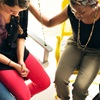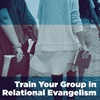In the fall of 2003, Greg Bowman from the small groups staff at Willow Creek Community Church introduced us to "Supergroups," a small group growth concept that has helped us answer, "How big can a small group be?"
We who direct small groups programs are constantly pushing our leaders in two conflicting directions. On the one hand, we encourage them to promote deep, meaningful relationships within their groups. But at the same time, we come along once or twice a year and say, "OK, it's time to break this up and send away one or more of your members to start a new group." In our need for leaders, we put community at risk. We're finding Supergroups to be a common ground for our leaders whose groups have grown large, and who want to continue leadership development, but also want to maintain meaningful Christian community.
Overview Of a Supergroup Meeting
The most important aspect of Supergroups is this: during a regular small group meeting, group members break into smaller groups (called "sub-groups") in different rooms.
Of course, the first reaction of group members is, "If we do that, how will we stay connected with the whole group?" But sub-groups only take a portion of the meeting. The larger group meeting begins with the usual prayer time or "catch up" time—whatever is the group's usual habit. Then, the leader still leads the first part of the lesson in the larger group setting. After that, the sub-groups meet.
These "meetings within the meeting" happen for a pre-determined amount of time, which could change from week to week. It might be 20 minutes this week. On another night, 45 minutes might be better.
After the breakout sessions, the large group reconvenes to debrief about what's been discussed. Or, just to complete the evening with prayer time or refreshments.
This approach solves the group size question, because a Supergroup can grow to any size. You might begin the evening with 46 people in your family room (making meaningful community impossible), but everyone knows that the intimate setting will come later, during their sub-group of 4-8 people.
The Subgroup Agenda
What happens in these breakout groups?
- 1. Each week, a different person is assigned to lead the discussion. This means that the materials need to be something that can be led by anyone, and do not require advance preparation or a certain level of Bible knowledge.
- Video curriculum ("plug and play," like the materials from lifetogether.com) works well in this setting.
- 2. While these discussion groups are meeting in various rooms, the main group leader walks around, listening in on each subgroup. Two reasons for this:
- The leader can troubleshoot and help as needed.
- The leader can informally evaluate which sub-group members are better at leading discussions.
- This is where the leadership development element comes in. After rotating sub-group leaders for a period of time, the members who have leadership potential will emerge.
- 3. After everyone in the sub-group has had several turns to lead, the natural leaders will be evident. At this point, they can be encouraged to move to the next leadership level, which is to become the permanent leader of their sub-group.
- 4. After some more time has passed and this sub-group leader demonstrates that they possess the necessary skills, they can be asked to become a co-leader of the group at large.
- 5. Eventually this leader-in-training could be sent off to begin a new group or could be sent off with his or her sub-group to start a new group.
Advantages of Supergroups.
- Relief for the group's overall leader. A Supergroup spreads out the leadership load. The weight of the whole meeting is not on one person's shoulders.
- 2. Encourages individual participation. In the sub-group setting, it is easier for each person to ask their question, to share the insight they received from this passage. Or, to share a personal burden (as the intimacy of the group progresses), one that they might not have had the courage to bring up in a group of 22.
- 3. Settles the group-size issue. With this plan, you can get as big as you want to—and no one gets lost in the crowd. It also addresses the problem of groups thinking they are "too big." It lets the "open-chair" setting be unlimited. No one needs to turn people away. In short: instead of fighting group size, Supergroups is a way to utilize group size.
- 4. Leadership training. We small groups directors are always looking for additional leadership development strategies. Here's another one for our arsenal. Many churches have people wanting to join groups at a rate faster than groups can be started—which is a good problem. Supergroups is a way to train leadership faster and better, and so keep up with church growth.
- 5. Allows people space to grow into leadership. Every leader recalls what it was like to say "yes" for the first time to small group leadership; it's a big step from "person in a group" to "leader of a group." Most people run away when the "L" word is mentioned! This lets people work into the idea of leadership slowly, a chewable bite at a time.
Our Experience
We've already experienced Supergroups working for us in multiple settings. One of our small group leaders, Matt, has been practicing this idea with a neighborhood evangelistic group. The group targets unchurched people. Matt and his group provide child care (in the basement) for neighbors who attend. He himself presents a basic Bible lecture for the first 15-30 minutes, and then he splits everyone into sub-groups for a chance to ask their individual questions, and to build community in group life. So far this year, 31 neighbors have attended this group.
Another of our small group leaders, Don, serves in our worship area. Prior to this year, Don already facilitated small groups for our choir. This year, he decided the orchestra need small groups, too, so he's been developing them using Supergroups. As a result, dozens of orchestra members have experienced a small group for the first time, and some exciting life stories are coming out that effort.









